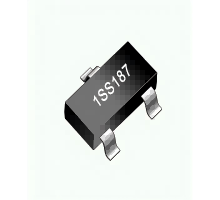There are various types of packaging for rectifier diodes, each with its unique design features and application scenarios. The following is an original summary of the main packaging types, with clear logic and easy understanding:

1、 Traditional Through Hole Technology (THT)
This type of packaging requires installation and soldering through drilled holes on the circuit board, and is characterized by high mechanical strength and good heat dissipation (especially when equipped with heat sinks). It is commonly used in high-power or high reliability applications.
Axial Lead Packaging:
Representative models: DO-41, DO-15, DO-201AD, DO-204 series.
Characteristic: Two leads extend along the axis from both ends of the component body. Relatively compact in size, it spans across the circuit board during installation.
Application: Small and medium power rectification (such as 1A, 3A level). DO-41 is the most common, used for small signal or small current rectification; DO-15/DO-201AD has slightly larger volume and power.
Stud Mount:
Representative models: DO-4, DO-5.
Features: One end is a bolt (used to fix on the radiator), and the other end is a lead (used for electrical connection). The body is usually a cylindrical metal shell.
Advantage: Extremely strong heat dissipation capability.
Application: In high current and high-power rectification scenarios (ranging from tens of amperes to hundreds of amperes), such as welding machines and high-power power supplies.
Direct insertion package with heat sink:
Representative models: TO-220, TO-247 (TO-3P), TO-3 (less commonly used for diodes).
Features: Plastic body, metal backplate (with mounting holes) for fixing on the radiator. The lead wire is led out from one side of the plastic.
Advantages: superior heat dissipation performance compared to axial packaging, easy installation (heat sink size can be independently selected).
Application: Medium to high power rectification (several amperes to tens of amperes) is one of the most common power rectifier tube packages in devices such as switching power supplies and inverters. TO-247 is larger and has stronger power/current capability than TO-220.
2、 Surface Mount Device (SMD)
This type of packaging is directly soldered onto the surface of the circuit board without the need for drilling. It has the advantages of small size, light weight, high automation production efficiency, and suitability for high-density layout, and is the mainstream of modern electronic devices.
Miniature universal patch packaging:
Representative models: SOD-123, SOD-323, SOD-523, SMA (DO-214AC), SMB (DO-214AA), SMC (DO-214AB).
Characteristics: The volume increases sequentially (SOD-123>SOD-323>SOD-523; SMA<SMB<SMC). Usually it is a two terminal plastic package.
Application: From small signal to medium power rectification (several hundred milliamps to several amperes). The SOD series has a small volume and is commonly used in confined spaces; SMA/SMB/SMC have slightly higher power and are commonly used in power input/output stages.
Power patch packaging:
Representative model:
DPAK (TO-252): Three terminal (the middle large terminal is usually the cathode, connected to the back heat dissipation metal sheet), which needs to be soldered to the copper foil of the PCB for heat dissipation.
D2PAK (TO-263): Larger than DPAK, with stronger heat dissipation capability.
SOT-223: A smaller power package with four pins (but often only three are used), with the middle pin connected to the back heat sink.
DFN (such as DFN5060-2L): There are large exposed pads at the bottom for heat dissipation, with no side pins or very short pins. Ultra thin and low thermal resistance.
TOLL (TO Leadless): A relatively new high-performance package with no surface pins, and all electrical connections and heat dissipation are through bottom pads (usually containing multiple high current pads and a large heat dissipation pad).
Features: The design focuses on optimizing the heat dissipation path, efficiently conducting heat to the copper layer of the PCB through the bottom large solder pads for heat dissipation.
Advantages: Combining the automation advantages of SMD with heat dissipation capabilities close to TO-220 level (especially DFN, D2PAK, TOLL).
Application: Medium to high power rectification (several amperes to tens of amperes), widely used in various switch power modules, server power supplies, communication equipment power supplies, etc., is the main replacement for TO-220/TO-247 surface mount solutions.
Summary and selection points
Power level: Low power axial (DO-41) or small patch (SOD); Medium power options include direct insertion with heat sink (TO-220) or power patch (DPAK, SMB/SMC); High power options include bolt type (DO-4/5) or large patch type (D2PAK, TOLL).
Space limitation: High density design prioritizes surface mount packaging (SOD, SMA, DFN).
Heat dissipation requirements: For high power consumption, it is necessary to choose a package with a good heat dissipation path (bolt type, direct insertion with heat sink, power patch with large heat dissipation pads at the bottom such as DPAK/D2PAK/DFN/TOLL). The design of the radiator directly affects the actual power capacity.
Automated production: SMD packaging is preferred for large-scale production.
Cost: Generally, the cost of direct insertion packaging is slightly lower, but SMD saves drilling and possible plug-in costs, and the comprehensive cost needs to be analyzed specifically.
Core logic: The selection of rectifier diode packaging is essentially about finding the optimal balance between current/power capability, heat dissipation requirements, circuit board space limitations, production process, and cost. Understanding the structural characteristics of each package, especially the heat dissipation path, is the key to making the right choice. In modern design, power patch packaging (DPAK, D2PAK, DFN, TOLL, etc.) has become the absolute mainstream due to its excellent comprehensive performance.
